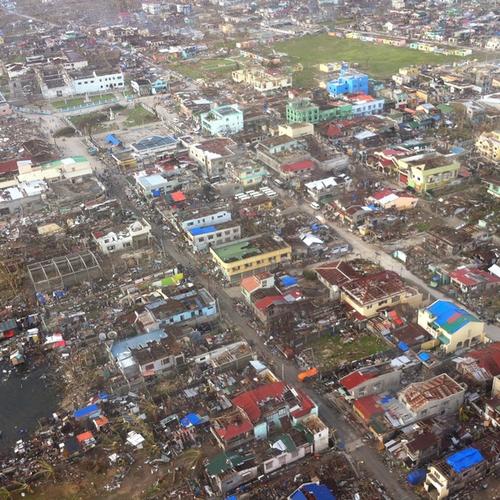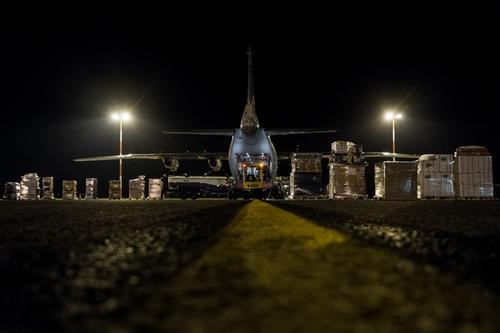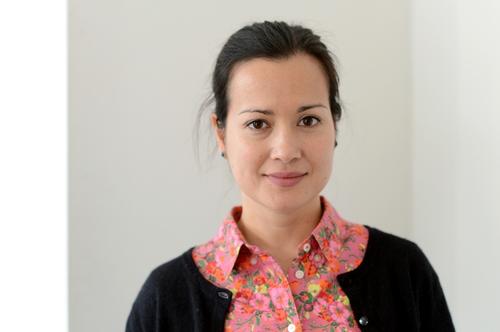In the ongoing effort to assist people in the central Philippines affected by Typhoon Haiyan, Médecins Sans Frontières (MSF) teams have reached by car, boat, plane and helicopter some of the areas that were in the centre of the storm’s path — northern Cebu island, eastern Samar island, Panay Island, and western Leyte province — in order to evaluate the damage in the area and the medical needs of the populations.
The storm’s toll was clearly massive and much of the region’s infrastructure was rendered inoperable, meaning that large numbers of people have yet to receive assistance — particularly in outlying islands that neither the national government nor international agencies have been able to reach.
“Access is extremely difficult and [the situation] is preventing people from receiving help,” says Dr Natasha Reyes, MSF emergency coordinator in the Philippines. “Our priority is to get to those people in more isolated areas; they are the hardest to reach and often the last to receive much-needed assistance.”

Assessing the needs
One MSF team went by plane to Guiuan, a village of 45,000 people in the east of Samar, one of the first areas the typhoon hit. The damage is extensive and the needs immense.
“The situation here is bleak,” says Alexis Moens, MSF’s assessment team leader. “The village has been flattened – houses, medical facilities, rice fields, fishing boats all destroyed. People are living out in the open; there are no roofs left standing in the whole of Guiuan. The needs are immense and there are a lot of surrounding villages that are not yet covered by any aid organisations.”
A full team will return by helicopter tomorrow and immediately get to work delivering medical assistance to as many people as possible. The priority will be to treat the wounded and ensure that people who need additional care are referred to more specialised services. The team will also provide clean water, shelter and relief items.
“Today I met a man who lost his whole family,” says Moens. “He was hospitalised because he tried to stab himself with a knife in the chest. Tragically, we hear these sorts of stories in many places. There are villages that have lost so many people, and psychosocial assistance is going to be essential to help people rebuild their lives.”
Another MSF team carried out an assessment of Panay Island by helicopter and estimates that around 50 percent of Roxas City, a town in Cadiz province, has been destroyed. Further assessments will be carried out in the affected villages surrounding Roxas. A third team is currently in Ormoc, from which it will survey the situation in western Leyte.
A fourth MSF team drove to northern Cebu, where most of the people who were displaced appear to have found shelter with other families and communities. The local hospital was overwhelmed with patients immediately after the typhoon passed through the area, but other nearby health centres and hospitals provided support, and it is now coping relatively well. The MSF team later boarded a ferry to Bantayan Island, where they will stay overnight and continue the assessment.
More staff and materials on the way
MSF is rapidly scaling up its response and will have more than 100 staff in the area in the coming days, including doctors, nurses, surgeons, logisticians, psychologists, and water and sanitation experts. Ten planeloads of aid materials—including medical supplies, shelter materials, hygiene kits, and water and sanitation equipment—are being dispatched to the Philippines from MSF warehouses around the world. Three of the planes arrived in Cebu today.
Latest updates
(last updated 14 November)
- Emergency teams from MSF have been extending their reach out into the areas that appear to have been worst affected by the typhoon. There are at least five distinct regional targets, where separate MSF teams have been looking at the extent of the medical needs in order to respond with basic care and medical supplies. The nature of that response will vary, depending on the local setting. But high on the list of priorities is the wish to support local hospitals, many of which have been damaged or restricted in their services, but which must be helped to provide essential specialist care.
- One team has returned by plane today (Thursday) to Guiuan in the east of Samar, an area hit first and hard by the typhoon. The damage there is extensive and the needs huge. Almost all the buildings in the town were destroyed. The local hospital is also severely damaged and not functional. The most seriously injured people had already been evacuated. We plan to start providing medical services as soon as possible to the population and will also work in the town on water and sanitation and shelter needs. An assessment by helicopter is planned for the outlying islands tomorrow. Depending on the needs identified, the next stage would be to send mobile clinics further up the coast of eastern Samar and to outlying islands using boats.
- The first impression of another team who went to Ormoc town in the west of Leyte province was that the town is badly affected, with the majority of buildings destroyed. There is zero-to-limited power supply. The partly damaged hospital, originally with 200 beds, can now run just an emergency department with 25 beds. The team is now in the process of assessing the area between Ormoc and Tacloban.
- Another team is travelling from Cebu to Leyte tonight (Thurs) in order to evaluate the needs in the rural areas in the south of the island.
- Yesterday (Wed), an MSF team also carried out an assessment of Panay Island by helicopter. From what they saw, they estimate that around 50 percent of Roxas City, a town in Capiz province, has suffered significant damage. Further assessments will be carried out in the affected villages surrounding Roxas. Tomorrow, a team comprising two nurses, a logistician and a water and sanitation specialist will fly from Manila to Iloilo. They will try to reach San Dionisio, Estancia and Balasan municipalities in the northeast of Panay Island to assess the needs. Teams are currently organising supplies of drugs, medical equipment and equipment to purify water, as well as essential items for distribution such as plastic sheeting, cooking items, jerrycans and hygiene kits.
- Following a rapid assessment on Bantayan Island off Cebu Island, the needs are for water and sanitation and shelter. MSF will also assess the five small islands south of the main island of Bantayan.
- After several days struggling to get transport space for a small medical team and supplies, a team of six MSF staff has finally reached the major population centre of Tacloban, where they started an assessment of the situation. We are coordinating with local health authorities, with whom we discussed the support we can provide to their teams as well as the set-up of an MSF-run field hospital in the coming days. The team also visited Palo, a town 30 mins drive southeast of Tacloban, where the hospital has been severely damaged by the typhoon. The teams will head further south in Leyte Island to continue the assessment.
- MSF is strengthening its overall team (currently 91) and there will be a total of 141 staff – including doctors, nurses, surgeons, logisticians, psychologists and water and sanitation experts – on the ground in the next few days.
- It’s a logistical nightmare. Transport links to the area have been seriously disrupted, which has made access particularly difficult. Tacloban airport is badly damaged and roads are blocked by debris. The airport in Cebu is seriously congested.
- Types of injuries we expect to see are fractures and lacerations/cuts. It is important that people receive treatment as soon as possible to avoid complications and infections. Outbreaks of diseases are also an issue, such as tetanus, leptospirosis (a bacterial disease, contracted from floodwater carrying infected animal waste), and diarrhoea-related diseases.
- There are lots of dead bodies and management of this is an issue.
- Medical structures have been damaged or destroyed, with medical equipment and supplies washed away.
- There continues to be a lack of information on the situation in rural and remote areas but as the days go on we receive more and are trying to reach these areas.
- MSF is sending hundreds of tonnes of medical and relief items. Three of our cargo planes have arrived in Cebu airport (one from Dubai and two from Belgium), and six more will arrive in the coming days (one from Belgium, two from Dubai, one from Panama, one from the Netherlands and one from France). The humanitarian cargo includes medical kits for treating the wounded, equipment for medical consultations, tetanus vaccines, relief items such as tents and hygiene kits, water and sanitation equipment and an inflatable hospital.
- MSF has been present in Cebu, the city with the nearest fully operational airport to the disaster area, since Saturday 9 November.






